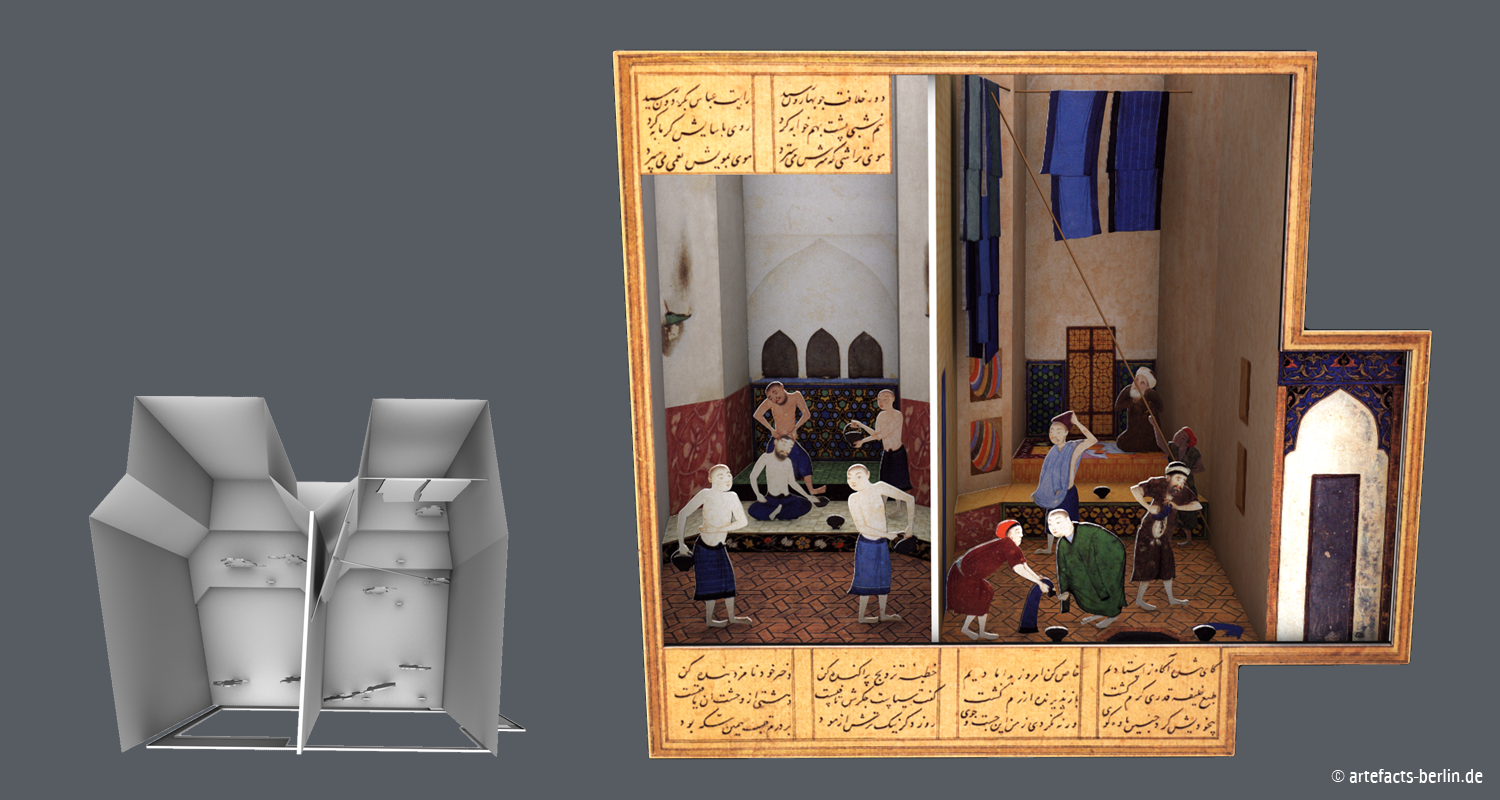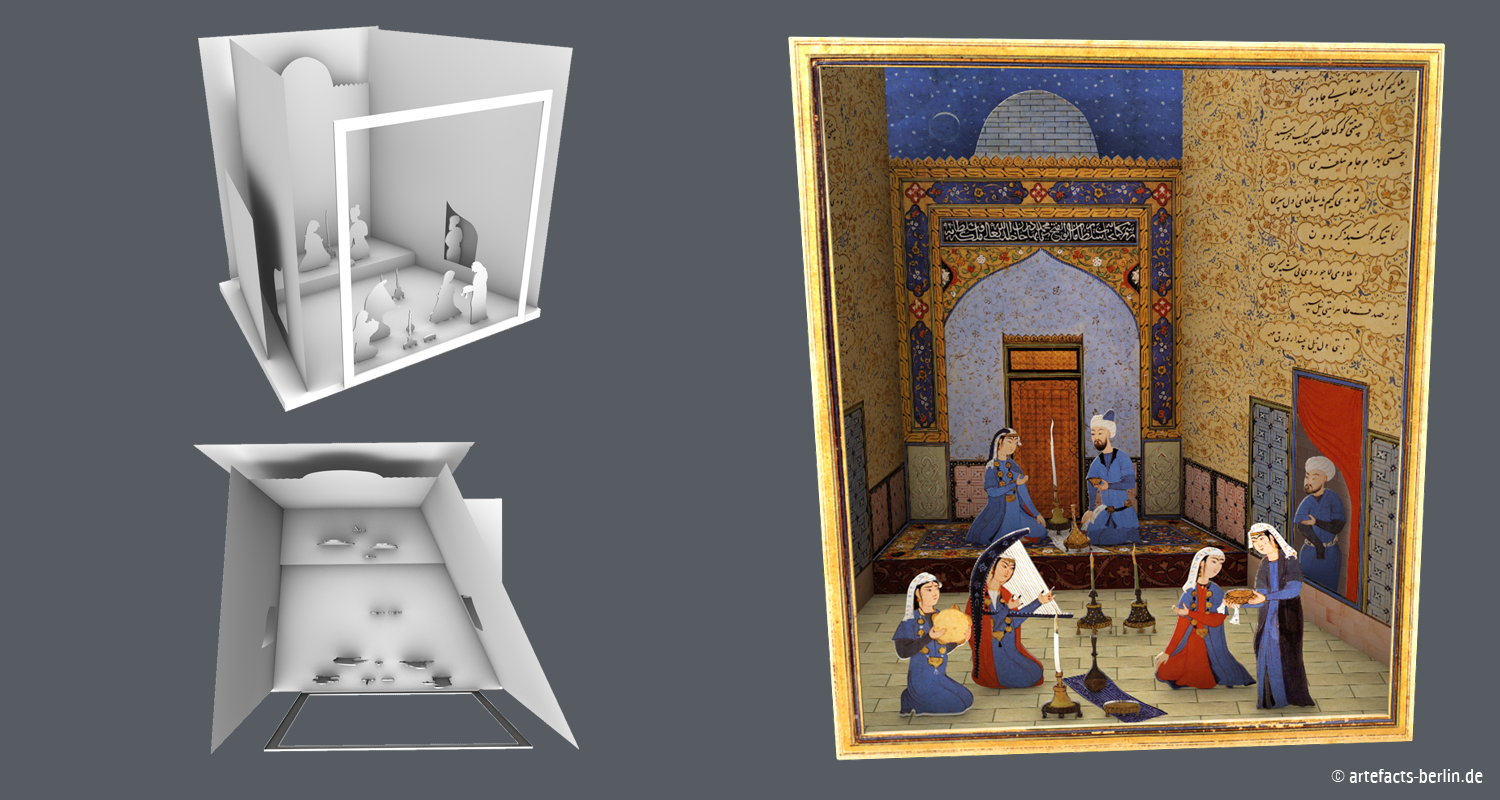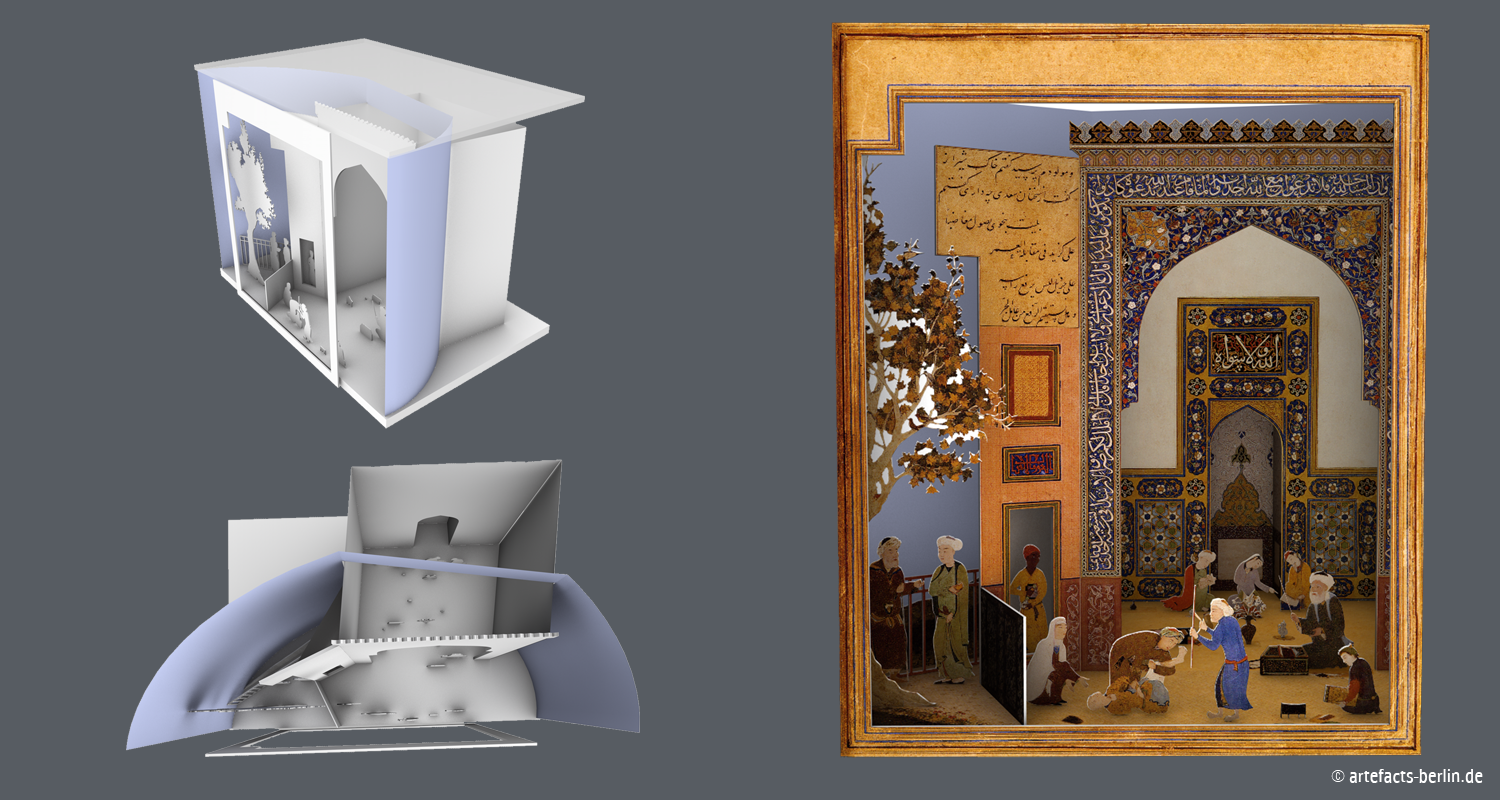About the project
For the grand reopening of the newly restored National Museum Herat in Afghanistan, three dioramas were requested by the Museum of Islamic Arts, Berlin. They are now integrated into the permanent exhibition in Herat, which houses archaeological and historical exhibits, as well as Islamic manuscripts.
The idea was to present the famous miniature paintings, found within these manuscripts, in a new way. Since perspective is often emphasised in these paintings, we decided to create real perspective by transferring the two-dimensional miniatures into three-dimensional dioramas. In this way, the visitor would be encouraged to explore the painting and to actually look around inside the scene.
The most challenging task was to recreate the same spacial impression as in the original miniatures; this required a lot of testing and rearranging. For this purpose, each element of the painting was rebuilt within a 3D-programme in order to precisely arrange each scene. The final 3D-models, which were made exactly to scale, were then used by the model-maker to build the final reconstruction.
The dioramas were constructed in a modular fashion in order for them to be easily packed and transported to Herat, Afghanistan, where they could be reassembled in the museum.
Literature
- Barry, M. 2004: Figurative Art in Medieval Islam and the Riddle of Bihzād of Herāt (1465–1535), Paris.




